Food unites the people of the diaspora, despite the differences in culture. Our cultural connections are evident throughout the diaspora. These connections and traditions make up the fabric of our culture. It is through our shared culture, food, and experiences that we keep traditions alive.
Our traditions and culture help unite us as we honor our ancestors. Our African ancestors, no matter where they ended up, learned how to take what they had and incorporate their traditions. They used old skills with new tools in new worlds, and those traditions are still alive today. We can see our heritage in the food that unites our people.
From flatbreads, soups, rice, drinks, and fruits – food’s significance to culture across the diaspora is undeniable. Tracing our traditions back to these different African countries helps us identify our lineage. As people of the diaspora and of African descent, it is oftentimes hard to trace our lineage beyond slave ships.
The cooking traditions brought to the new world by our ancestors became a way to continue our legacy. Enslaved Africans used food as a way to pass down our traditions.
It is through food and the traditional ways we prepare it that show how our ancestors left a permanent imprint on the world. African people who were enslaved passed down their recipes and created new ones along the way. Here are 10 foods that connect cultures across the diaspora and unite us.
1. Black Eyed Peas

Originating in West Africa, black eyes peas have become a staple across many cultures. In Africa, black eyes peas were in abundance. Black-eyed peas were often pounded into a powder for tasty bean pastes seared as fritters.
African descendants, Its origins in Africa are tied to spiritual beliefs such as to ward of “evil eye”, or aid in bringing healthy twins. In the south, it is believed to be good luck that will bring abundance and fortune.
2. Collard Greens

Southern cuisine is often referred to as “Soul Food” and collard greens are for the soul. Though collard greens did not originate in Africa, it has become a staple of southern cuisine and other cultures across the diaspora.
It is through the traditions in preparing collard greens that we find evidence of African influence. The tradition of eating greens that have been cooked down into a low gravy, and drinking the juices from the greens, is of African origin. This is known as “pot likker.”
Enslaved people used their African dishes and created new ones, using the foods available in the region they lived in.
3. Sorrel

Sorrel is a type of hibiscus plant. It produces reddish-purple flowers. Some use this plant for cooking, but across the diaspora, you can also find sorrel being made into a beverage.
They use the flowers of this plant to create a drink that is common in Africa, the West Indies, and Mexico. In Nigeria, it is known as Zobo drink (or Zoborodo), in Ghana, Sobolo.
4. Roti
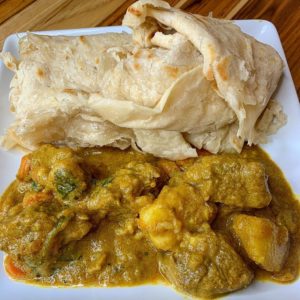
Roti is a flatbread used in West Indian cuisine and is typically paired with chickpeas, curries, potatoes, and meats. The roti and its popularity in the West Indies tell a story of trade routes and slave trading.
It can be found in places like Trinidad and Jamaica, but flatbreads are nothing new to the diaspora. Another flatbread that is popular within diaspora cuisine is Injera. It is typically used in Ethiopian cultural food.
In the Horn of Africa, where Ethiopia and Somalia are found, traditional meals are based on flatbread.
5. Jollof Rice

We know there is a huge debate about who has the best Jollof rice, however, the rice dish is so rich in culture it should unite us.
Jollof is said to have originated in West Africa, either in Ghana or Nigeria. Haitians, Nigerians, and Ghanaians all have their own take to making Jollof but this West African dish is proof of our lineage.
Another popular single-pot rice dish is Pilau, which originated in Kenya and made its way to the West Indies.
6. Soup Joumou
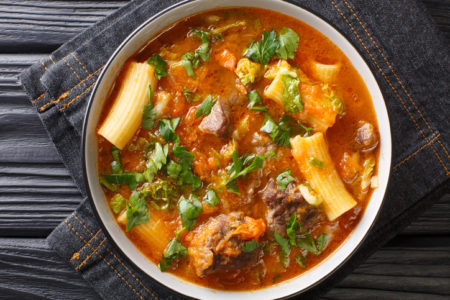
Soup Joumou is very special to the Haitian people. Enslaved Africans were forbidden to eat Joumou, as it was said to be a delicacy only enslavers could have. After the Haitian revolution and the independence of the nation, this soup was eaten by the slaves.
It is now known as a soup that symbolizes freedom and strength. Haitians all around the world still eat Soup Joumou on January 1st in honor of their ancestors who fought for their independence.
7. Stews
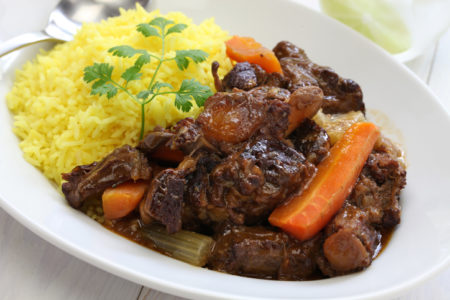
Stews are very popular across African cultures, so it is no surprise that enslaved Africans would pass this down. When the slaves arrived in the West Indies, they continued using foods that they brought, as well as what they could find on land.
African chefs brought with them unique skills like stewing and browning. African pots, usually made of iron, were ideal for the browning process. Food was a way African slaves could retain their roots and pass down their traditions.
8. Okra
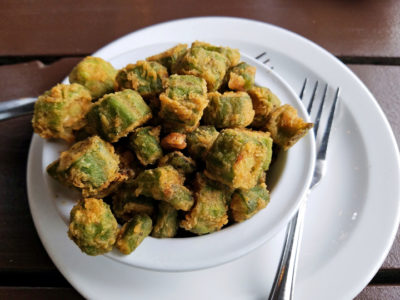
Enslaved Africans were brought to the French colony in large numbers starting in 1719, and by 1721 more than half the residents of New Orleans were African. Okra serves as evidence of West African influence across the south as well as the West Indies.
Slaves from Angola also brought okra to the New World, but called it “ngombo”/ gumbo. Gumbo is a popular southern dish that has its notoriety in New Orleans. Similar okra-based stews and soups could be found anywhere numerous enslaved Africans and their descendants lived— and, those dishes can still be found there today.
9. Yams
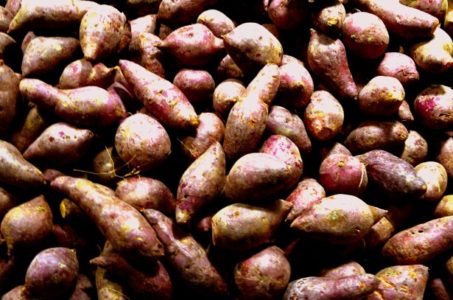
This tuber root vegetable has strong ties to Africa. Yams are native to Africa.
Originating in West Africa, it is known as a symbol of fertility. It even plays a part in African weddings.
Yams are not sweet potatoes, which are a different tuber root vegetables. Despite this difference, the popularity of sweet potatoes, as well as cassava, can indicate that the Africans who arrived in those regions used the tuber root they had available.
10. Watermelon

Did you know watermelons originated in Africa? The first watermelons are said to have grown in South Africa.
Scientists believe that the watermelon’s progenitor, coined the ur-watermelon—was cultivated in Africa. In Egypt, they cultivated watermelons that more resemble the ones we eat today.
Evidence of seeds and paintings of watermelons have also been found in tombs. Due to the Transatlantic slave trade, watermelons made their way to the “new world”.
Watermelons could be found growing in Florida as early as 1576.





